Logic operators can be used to combine the results from two ranges to give a TRUE or FALSE result.
The following example shows the RTC for controlling the status of a pump depending on the depth in the controlling node and the flow in a downstream conduit.
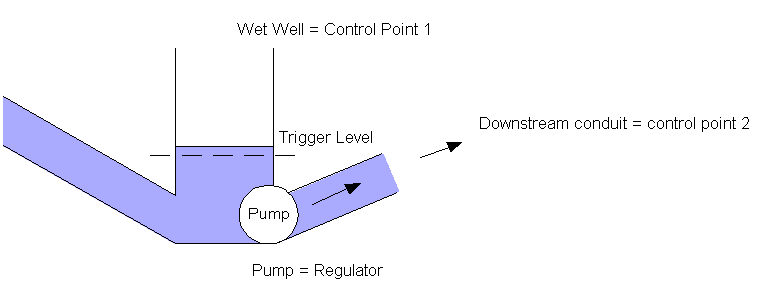
Under this example, the pump will be switched ON when the level at node K reaches 20mAD, providing the flow in conduit K.2 does not exceed 0.5 m3/s. At other times, the pump will be switched OFF by default.
The RTC is defined by adding components to a pump regulator in the RTC Window Editor.
|
Component |
Parameters |
Effect |
|---|---|---|
|
RANGE 1 |
Range type: Z - height above datumLocation node: KMinimum: 20Maximum: |
TRUE if water level at node K is greater than or equal to 20 mAD |
|
RANGE 2 |
Range type: Q - flowLocation link: K.2Minimum: Maximum: 0.5 |
TRUE if flow in conduit K.2 is less than 0.5 m3/s |
|
LOGIC 1 |
Operator: ANDCondition 1: RANGE 1Condition 2: RANGE 2 |
TRUE if both RANGE 1 and RANGE 2 are TRUE |
|
RULE 1
|
Condition: _default_Rule type: OFF |
Default status of pump is OFF |
|
RULE 2 |
Condition: LOGIC 1Rule type: ON |
Switch on pump if LOGIC 1 is TRUE |
- Range 1: Defines node K as a control point with a minimum value of 20 mAD
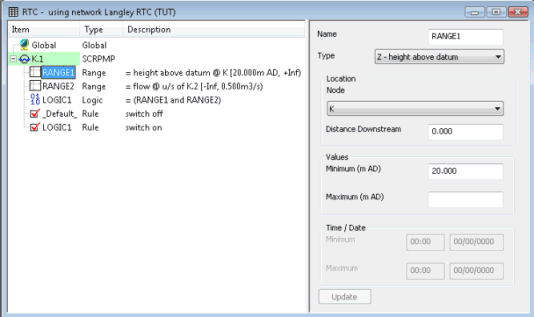
- Range 2: Defines Link K.2 as a control link with a maximum value of 0.5 m3/s
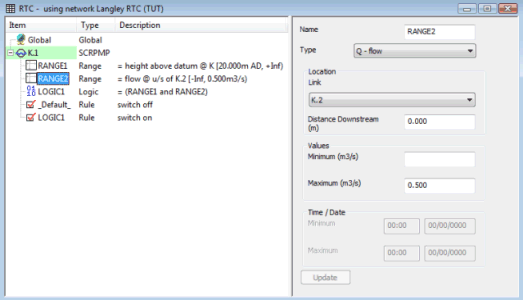
- Logic 1: If the level at node K is at or above 20 mAD and the flow in link K.2 is less than 0.5 m3/s, this logic statement is TRUE
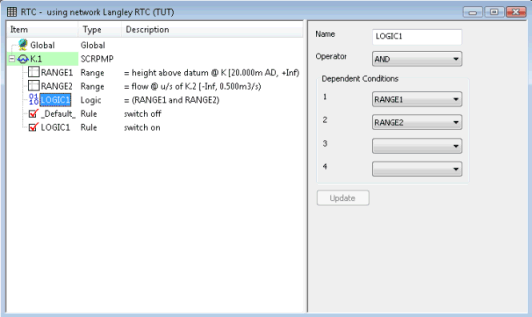
- Rule 1: Unless subsequent rules are true, the pump will be set to the default status of OFF
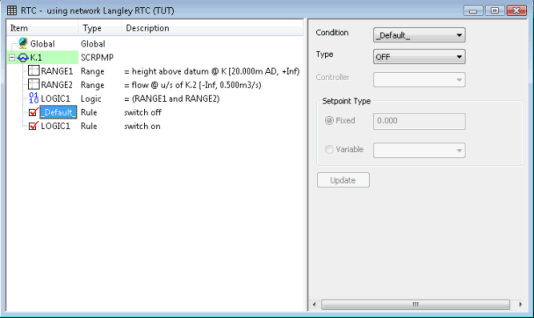
- Rule 2: Switches the pump ON if the level at node K is at or above 20 mAD and the flow in link K.2 is less than 0.5 m3/s
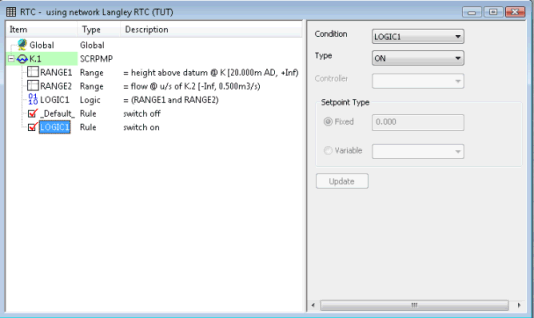
For a further example of an RTC Scenario, see RTC Example.
